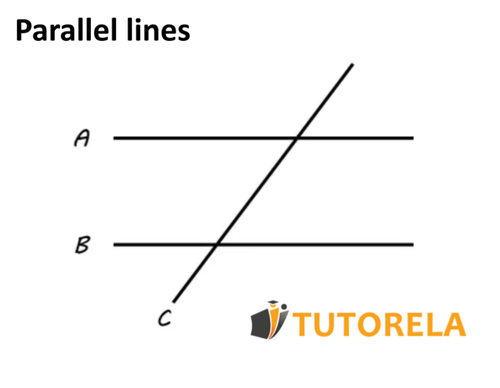Before going deeper into opposite angles, we will pause a moment to visualize the types of scenarios where this type of angle can be found. To make it easier to understand, we will draw two parallel straight lines cut by a secant or transversal, as shown in the following illustration:
Angles in Parallel Lines Practice Problems - Opposite & Corresponding
Master angles in parallel lines with practice problems on opposite angles, corresponding angles, alternate angles, and collateral angles. Step-by-step solutions included.
- Identify opposite angles formed by intersecting lines and apply the equal angle property
- Calculate corresponding angles when a transversal cuts through parallel lines
- Solve for unknown angles using alternate angle relationships in parallel line systems
- Apply collateral angle properties to find supplementary angle measures
- Work with complex geometric figures involving parallelograms and trapezoids
- Use angle relationships to solve multi-step problems with algebraic expressions
Understanding Vertically Opposite Angles
What are opposite angles?

What do we see here? The transversal intersects with each one of the straight lines and (in our case and are parallel, although this is not required in order to get opposite angles).
With this example in mind, we are ready to move on to the formal definition of opposite angles, which will help us to identify them more easily:
Opposite angles are a pair of angles that arise when two straight lines intersect. These angles are formed at the point of intersection (which we will call the vertex), one in front of the other. Opposite angles are equal.
In the following illustration, we can see two examples of opposite angles, the first pair is marked in red and the second pair in blue.

Practice Vertically Opposite Angles
Does the diagram show an adjacent angle?
Examples with solutions for Vertically Opposite Angles
Does the drawing show an adjacent angle?
Adjacent angles are angles whose sum together is 180 degrees.
In the attached drawing, it is evident that there is no angle of 180 degrees, and no pair of angles can create such a situation.
Therefore, in the drawing there are no adjacent angles.
Answer:
Not true
Does the drawing show an adjacent angle?
Adjacent angles are angles whose sum together is 180 degrees.
In the attached drawing, it is evident that there is no angle of 180 degrees, and no pair of angles can create such a situation.
Therefore, in the drawing there are no adjacent angles.
Answer:
Not true
is parallel to
Determine which of the statements is correct.
Let's review the definition of adjacent angles:
Adjacent angles are angles formed where there are two straight lines that intersect. These angles are formed at the point where the intersection occurs, one next to the other, and hence their name.
Now let's review the definition of collateral angles:
Two angles formed when two or more parallel lines are intersected by a third line. The collateral angles are on the same side of the intersecting line and even are at different heights in relation to the parallel line to which they are adjacent.
Therefore, answer C is correct for this definition.
Answer:
Colaterales Adjacent
Is it possible to have two adjacent angles, one of which is obtuse and the other right?
Remember the definition of adjacent angles:
Adjacent angles always complement each other up to one hundred eighty degrees, that is, their sum is 180 degrees.
This situation is impossible since a right angle equals 90 degrees, an obtuse angle is greater than 90 degrees.
Therefore, together their sum will be greater than 180 degrees.
Answer:
No
In which of the diagrams are the angles vertically opposite?
Remember the definition of angles opposite by the vertex:
Angles opposite by the vertex are angles whose formation is possible when two lines cross, and they are formed at the point of intersection, one facing the other. The acute angles are equal in size.
The drawing in answer A corresponds to this definition.
Answer: